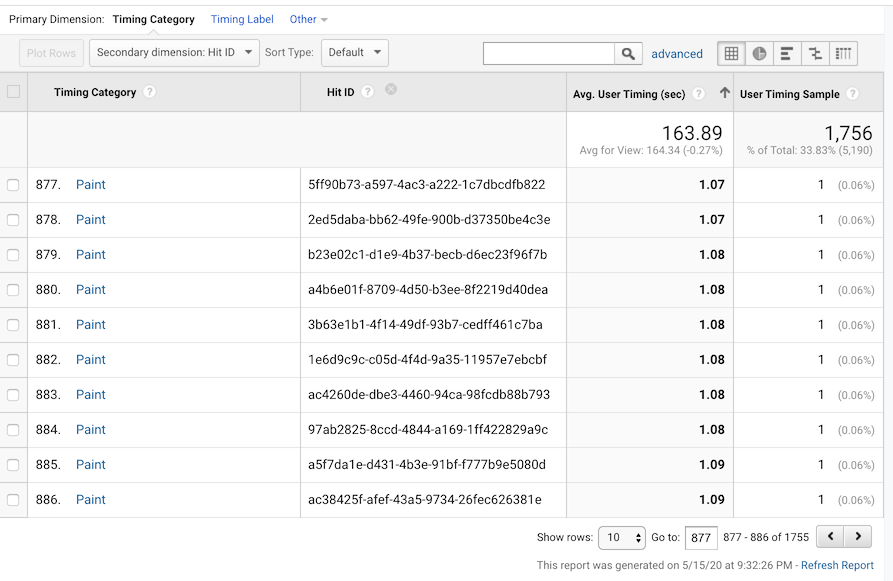Enhance Your Coverage with Secondary Dimension in Google Analytics
Enhance Your Coverage with Secondary Dimension in Google Analytics
Blog Article
Transform Your Analytics Strategy With Second Measurement in Google Analytics
By incorporating second measurements right into data analysis, a brand-new layer of insights emerges, losing light on intricate individual habits and interactions. The strategic application of second measurements holds the crucial to unlocking a treasure chest of invaluable information that can transform exactly how companies translate and act upon their information.
Recognizing Additional Measurements in Google Analytics
Second measurements in Google Analytics provide extra context to key data by enabling individuals to examine metrics throughout a second measurement, offering deeper understandings right into individual habits and communications on a website. Secondary Dimension in Google Analytics. While main measurements offer essential information factors such as pageviews, bounce rate, and session period, additional measurements supply a more comprehensive sight by segmenting the primary data even more. This segmentation enables users to analyze metrics in combination with another dimension, such as traffic resources, demographics, or customer behavior
Benefits of Using Secondary Measurements
Making use of secondary measurements in Google Analytics offers a tactical advantage by improving the deepness of evaluation and giving a more thorough understanding of user communications and habits on a web site. By including secondary measurements, experts can get important insights into the efficiency of certain sections or variables within their information. This allows an extra in-depth examination of user behavior past surface-level metrics, enabling a deeper expedition of the factors influencing individual involvement and conversions.

Just How to Apply Secondary Dimensions
When including second measurements in Google Analytics, one vital step is to pick the relevant metrics and measurements to improve the evaluation procedure. To implement additional measurements efficiently, start by accessing your Google Analytics account and browsing to the report you wish to boost with added data. Once in the record, situate the "Second Measurement" switch, normally found above the data table. Clicking on this switch will certainly open a drop-down food selection listing different measurements that can be added to your main dimension for much deeper understandings.
After selecting the proper secondary measurement, such as 'Source/Medium' or 'Tool Group,' Google Analytics will certainly display the information in a more thorough format, enabling you to cross-analyze various elements of customer habits. Bear in mind to experiment with different combinations of second and main measurements to uncover beneficial patterns and trends that can inform your marketing methods. By executing additional dimensions thoughtfully, you can obtain a more comprehensive understanding of your site or app performance and make data-driven choices to enhance your digital visibility.
Analyzing Information With Second Dimensions
Improve your information evaluation in Google Analytics by integrating secondary dimensions to dive deeper into user behavior patterns and optimize your digital advertising and marketing strategies efficiently - Secondary Dimension in Google Analytics. By including second dimensions to your key information, you can acquire useful understandings that can help you make notified choices about your website or app efficiency
Examining information with second dimensions permits you to segment your primary data further, providing a much more thorough view of individual communications. As an example, combining the primary dimension of 'source/medium' with a secondary measurement like 'touchdown page' can reveal which specific web pages are driving website traffic from different sources. This information can be crucial in refining your content method or optimizing your ad campaign to increase conversions.
Moreover, using secondary measurements allows you to identify connections in between different metrics, helping you comprehend the effect of different elements on user habits. Whether it's assessing demographics together with user interaction metrics or gadget groups with conversion rates, secondary dimensions encourage you to uncover concealed patterns and patterns that can lead your advertising initiatives.
Optimizing Performance With Additional Dimensions
To improve the efficiency of information analysis and decision-making in Google Analytics, integrating second measurements is key to enhancing efficiency metrics and getting much deeper insights into user habits patterns. By making use of second measurements, analysts can dive past surface-level data and discover useful correlations that might or else go unnoticed. This optimization method allows businesses to tailor their advertising and marketing initiatives much more properly, determine locations for renovation in website usability, and enhance general user experience.
Secondary dimensions offer an even more extensive sight of individual communications by offering additional context to her explanation main information metrics. Combining the main measurement of 'landing page' with an additional measurement like 'tool category' can disclose whether certain devices are a lot more most likely to drive interaction on certain touchdown web pages. This insight can notify responsive design renovations or targeted advertising strategies to boost efficiency.

Conclusion
To conclude, the integration of secondary measurements in Google Analytics provides organizations with a powerful tool to improve their analytics approach. Secondary Dimension in Google Analytics. By diving deeper into user actions and communications, marketers can discover important insights that can drive performance optimization and boost the overall customer experience. Leveraging additional dimensions permits an extra comprehensive analysis of information, leading to even more informed decision-making and tailored advertising initiatives
Secondary dimensions in Google Analytics offer extra context Learn More to key data by permitting individuals to evaluate metrics throughout a 2nd measurement, providing much deeper insights into customer actions and communications on a website. While key dimensions provide basic data points such as pageviews, bounce price, and session duration, secondary measurements provide a more thorough view by segmenting the primary data further.One of the crucial benefits of using secondary dimensions is the capacity to uncover relationships and patterns that may not be right away obvious when examining information with key measurements alone.When incorporating additional dimensions in see here now Google Analytics, one vital step is to pick the appropriate metrics and measurements to enrich the evaluation procedure. Matching the main dimension of 'touchdown web page' with a second measurement like 'device classification' can reveal whether particular devices are extra most likely to drive engagement on details touchdown pages.
Report this page